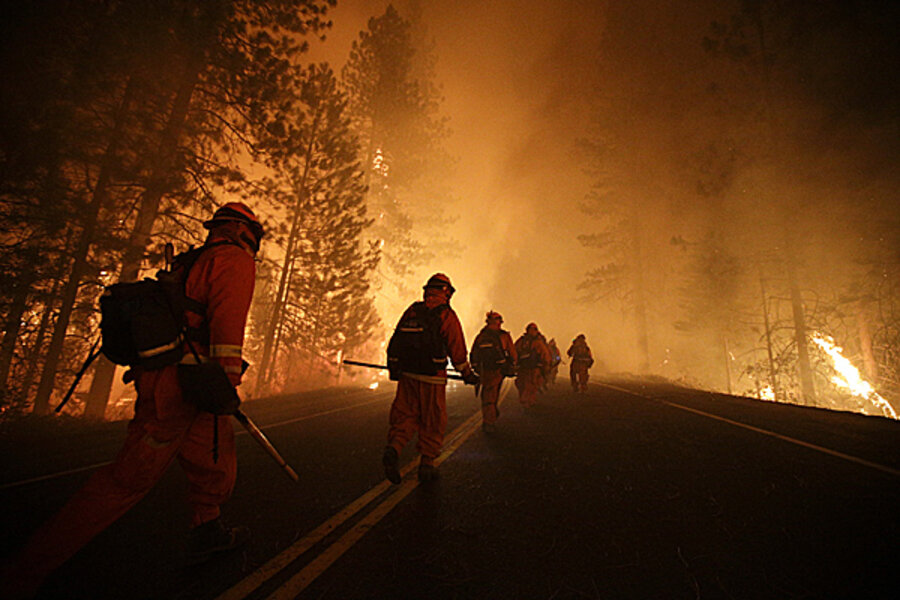Yosemite Rim Fire: new stress on California's stretched energy grid
Loading...
A wildfire spread through Yosemite National Park over the weekend, forcing the closure of hydroelectric dams and transmission lines that bring electricity to the city and county of San Francisco.
No power disruptions have been reported, but the fire's creep toward the Hetch Hetchy power stations drove Gov. Jerry Brown to declare a state of emergency for the area of the fire and San Francisco, just 150 miles west.
The threat to energy infrastructure comes during a peak period for electricity demand in a state squeezed for capacity. In June, the troubled San Onofre Nuclear Generating Station in southern California was closed permanently. The current 125,000-acre wildfire in northern California, which has burned for 10 days and is 15 percent contained, is adding new stress on the state's energy distribution.
Power continues to flow to customers uninterrupted, officials stressed, and the Hetch Hetchy hydroelectric power stations in the fire's path do not make up core capacity.
"Hetch Hetchy provides only a small amount of all electricity used in California," Larry Dale, an environmental economist at the Lawrence Berkeley National Laboratory, wrote in an e-mail. "It is locally important to San Francisco, but San Francisco obviously has other places to get electricity."
Most of the San Francisco area receives its power from Pacific Gas and Electric Co., but much of the city's municipal customers get electricity from the Hetch Hetchy Power System in Yosemite. That system of three hydroelectric powerhouses combine to offer 400 megawatts of clean energy.
Two of the powerhouses shut down on Aug. 19 threatening to disrupt San Francisco International Airport, San Francisco General Hospital, police, fire and other government entities. But the San Francisco Public Utilities Commission says it has avoided disruption by buying $600,000 worth of supplemental power supplies on the open market.
While the lights remain on in San Francisco for now, there is a larger concern about the impact of increased wildfires in remote, wooded areas, which are "perfect territory" for long transmission lines, according to Otto Lynch, a civil engineer who serves on the American Society of Civil Engineers' committee on America’s infrastructure.
"Wildfires pose a serious threat to electrical transmission and distribution lines, as they can result in increased maintenance costs and reduced line efficiency," according to a July 2012 study prepared for the California Energy Commission. "Climate change will only exacerbate the problem, as increased temperatures, a reduced snowpack, and altered precipitation will lead to increased flammability of fuel for longer periods of time, which will affect the size, frequency, and severity of wildfires."
Transmission lines themselves can actually be designed to serve as fire breaks, Mr. Lynch said in a telephone interview. Because they require vast trenches of cleared brush, they can sometimes stop a fire from passing through corridors.
Still, even the threat of fire can shut down lines as a preemptive measure, Lynch said, which necessitates additional backup lines in areas prone to natural disasters.
"Everybody fights the power lines until something like this happens," Lynch said. "We need the public’s acceptance that we need some redundancy in the system, so that if a natural event takes out a line we can sleep at night and say, 'Ok, we’re covered.' "








